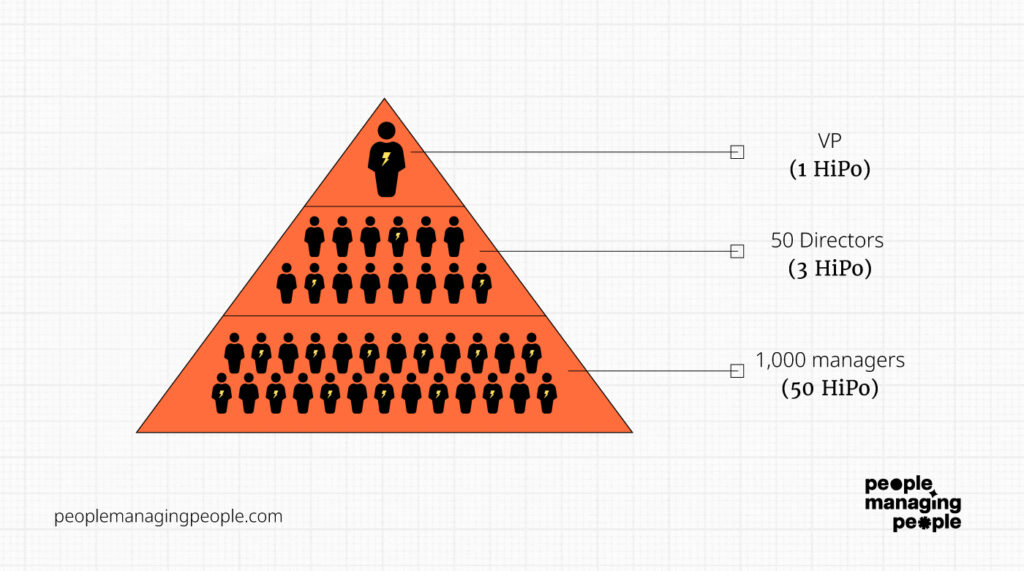Organizations identify high-potential (HiPo) employees in different ways, but most focus primarily on capabilities.
But, while skills and capabilities are important, they're only part of the equation.
There are three additional qualifiers that companies forget to consider when determining potential: how fast?; how far?; and for what?
When you take a more multifaceted approach to thinking about potential, it means that not everyone who you identify as a HiPo today will continue to be in your HiPo pool in the future.
Here I will draw on my experience building and leading talent processes for organizations, ranging from mid-stage startups to global organizations, to outline how to think about potential in your company for your current and future needs.
Capability Is Only Part Of It
Identifying HiPos is tricky because everyone has potential and assessing it is subjective.
To designate someone as a HiPo, you need to measure against some qualifiers. Some practitioners believe that it comes down to ability, social skills, and drive. Others consider things like strategic skills, performance, and self-leadership.
Assessing capabilities is the first step. Next, you need to look at those qualifiers in relation to some specific things.
How Fast?
Next, consider the accelerated rate at which you believe the person can move to the next level.
For example, you may look at Manager A and determine that they're capable of moving to the Director level in this company at some point in the future.
When you consider Manager B, you assess that they're capable of moving to the Director level in the next two years. That is a two-level jump in an accelerated time frame.
Both managers have potential, but Manager B’s perceived ability to learn and grow at an accelerated pace is what sets them apart.
How Far?
The next thing to consider is how far you think that person’s potential can take them in your organization. A good rule of thumb is to say that, for someone to be considered a HiPo, we need to believe that they have the potential to move up at least two levels in the organization.
That doesn’t mean that other employees don’t have the potential to move up two levels. The qualifiers are compounding. To be considered HiPo, that means the person 1) demonstrates the qualifying capabilities, 2) can grow at an accelerated pace, and 3) can move up at least two levels in the organization.
There is one more critical qualifier.
For What?
For someone to truly be a HiPo, you need to consider their potential in relation to the specific needs of the organization now and in the future. As needs change, the people in your HiPo pool will change as well.
For example, in one company where I worked, we brought in a senior leader to oversee a specific business segment. He had great specialized experience and was performing at a high level.
We believed he had the runway to move to more senior levels quickly and eventually take on an even bigger scope as the business segment scaled up. We definitely considered him to be a HiPo.
Then we pivoted our business strategy. We’d originally anticipated that the segment he ran would grow into a significantly larger portion of our portfolio in five years. The market told us otherwise, and the executive team decided to divest in that segment.
That leader still had the same great background, was still performing at a high level, and was still an agile learner who could quickly grow his capabilities. He was a specialist, though, and we no longer needed that specialty. He still had a lot of potential, but he was no longer a HiPo for our organization.
The opposite can also happen. For example, let’s say the highest level Operations role you have is Director. Even if someone in Ops has the potential to move to the VP level, they’re not HiPo for you because you don’t have a VP-level position.
Then, as the company scales unexpectedly quickly, you determine that you will need to scale the Ops team and add a VP-level role in the next two to three years. That person is now a HiPo because they have the potential to fill that organizational need.
Potential Changes Over Time
This is perhaps one of the hardest things for people to understand: HiPo is not forever.
HiPos generally make up approximately 5% of the employee population at any time. Let’s say you have 1,000 managers in your organization, with 5% (50 managers) designated as HiPo.
Those 50 managers move two levels to become Directors. At that point, 5% of them (round up to 3 Directors) are HiPo, meaning that they have the capabilities to move at an accelerated pace at least two levels (to VP) into roles that are relevant to the organization.
By the time those three Directors are VPs, it is likely that only one of them is still a HiPo with the capabilities to move at an accelerated pace at least two levels to an EVP or CEO role.
The tendency in organizations is to label someone as a HiPo for their full tenure in the organization. If that were true, though, then in this example, there would be 50 people who were HiPo for an EVP or CEO role.

Potential Must Translate Into Results
Here’s the other thing: potential only matters if it actually translates into results.
Leaders can get very attached to someone’s HiPo designation to the point that they don’t actually hold them accountable for results.
In a different company, we had a leader who was assessed as having exceptionally high potential. As a result, this person was given increased scope and authority.
Even when they were not producing results, the executive team further increased their scope and responsibilities citing their amazingly high potential.
By the time we exited that person from the organization, their lack of results had done extensive damage to the business. We kept them in role–and kept giving them more–for way too long because of their perceived potential.
Don’t Just Develop Your HiPos
As you shift to thinking about potential, and the HiPo designation as something that changes over time, it becomes apparent that it’s important to make sure that you’re not just developing your current HiPo population.
When organizations disproportionately skew their development resources to that 5% of people who they deem to have the greatest potential at any given time, they are putting themselves at risk. Instead, think more dynamically about talent planning to ensure that you are providing development opportunities across your organization.
That way, as the business environment continues to change, you are prepared with a more broadly capable employee population, and you are already investing in your HiPos of the future.
Interested to hear your take on this so either leave something in the comments or join the conversation over in the People Managing People Community, a supportive community of HR and business leaders passionate about building organizations of the future.


